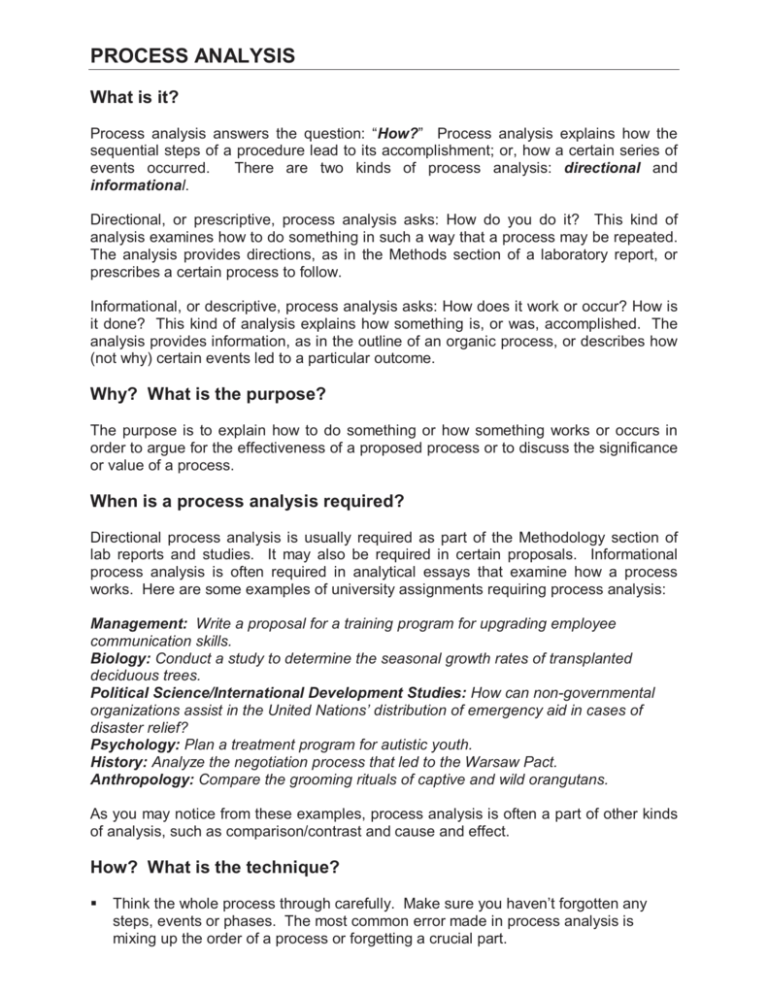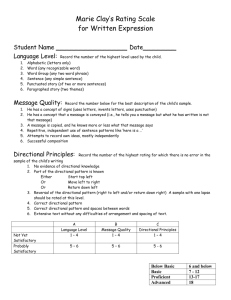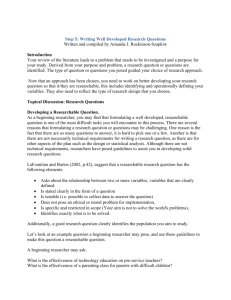process analysis - University of Toronto
advertisement

PROCESS ANALYSIS What is it? Process analysis answers the question: “How?” Process analysis explains how the sequential steps of a procedure lead to its accomplishment; or, how a certain series of events occurred. There are two kinds of process analysis: directional and informational. Directional, or prescriptive, process analysis asks: How do you do it? This kind of analysis examines how to do something in such a way that a process may be repeated. The analysis provides directions, as in the Methods section of a laboratory report, or prescribes a certain process to follow. Informational, or descriptive, process analysis asks: How does it work or occur? How is it done? This kind of analysis explains how something is, or was, accomplished. The analysis provides information, as in the outline of an organic process, or describes how (not why) certain events led to a particular outcome. Why? What is the purpose? The purpose is to explain how to do something or how something works or occurs in order to argue for the effectiveness of a proposed process or to discuss the significance or value of a process. When is a process analysis required? Directional process analysis is usually required as part of the Methodology section of lab reports and studies. It may also be required in certain proposals. Informational process analysis is often required in analytical essays that examine how a process works. Here are some examples of university assignments requiring process analysis: Management: Write a proposal for a training program for upgrading employee communication skills. Biology: Conduct a study to determine the seasonal growth rates of transplanted deciduous trees. Political Science/International Development Studies: How can non-governmental organizations assist in the United Nations’ distribution of emergency aid in cases of disaster relief? Psychology: Plan a treatment program for autistic youth. History: Analyze the negotiation process that led to the Warsaw Pact. Anthropology: Compare the grooming rituals of captive and wild orangutans. As you may notice from these examples, process analysis is often a part of other kinds of analysis, such as comparison/contrast and cause and effect. How? What is the technique? Think the whole process through carefully. Make sure you haven’t forgotten any steps, events or phases. The most common error made in process analysis is mixing up the order of a process or forgetting a crucial part. Make sure you include the preparation required, e.g. preparing handouts and slides for a proposed training program. Write down an outline of all the steps or phases involved in chronological order (from first to last). Make sure the sequence is correct and that nothing has been left out. For an involved process, group smaller steps together into larger categories or create sub-categories. For example, an analysis of the stages of early childhood development might first be divided into the ages of the child (0-1 month) then into sub-categories based on areas of development (Emotional). When giving directions for a process to follow, make sure you include necessary precautions when appropriate, and the reasons for these. For example, the methodology for a study on the effect of cardiovascular exercise on smokers might include a precaution of screening potential study subjects for pre-existing heart conditions prior to acceptance to prevent injury or death of subjects during the study. If appropriate, use your critical thinking skills to analyze the whole picture of the process, asking questions such as: “Is this process effective? What is the significance or relevance of this process? What is its value? What does it mean? What are the implications?” Define technical terms that the reader might not know, e.g. “behaviour modification.” Use time-marking transitions in your draft to make the order of the steps clear: “first,” “next,” “then,” “after,” “finally.” Also use transitions to distinguish sub-steps from major steps. Write in short, direct, declarative sentences. Illustrate steps with examples. Narrate the steps in order. Describe what is involved in each step or phase as clearly as possible. Revise your draft carefully. This is one of the most difficult kinds of analysis to write clearly. Have someone read it to ensure clarity. TRANSITIONS USED IN PROCESS ANALYSIS MAJOR STEPS/STAGES First (begin) second third fourth fifth finally SUB-STEPS/STAGES before during after next while meanwhile SUB-STEPS/STAGES then later when as soon as prior subsequently Adapted from Norton, Sarah and Waldman, Neil. Canadian Content. 2nd.ed. Toronto: Holt, Rinehart and Winston of Canada, 1992. © Jennifer Duncan. The Writing Centre, University of Toronto Scarborough. See terms and conditions for use at http://www.utsc.utoronto.ca/~ctl/twc/webresources/terms.htm








